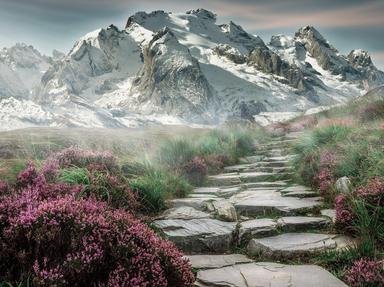Quiz Answer Key and Fun Facts
1. Which of the following collections of peaks consists solely of Scottish mountains over 3,000 feet in height?
2. Maybe the best known tick list of hills in England are the 214 hills described in a 7 volume 'Pictorial Guide to the Lake District'. The books were first published between 1955 and 1966. How are the hills included in them collectively known?
3. Not all peak bagging involves long lists of hills. There are three hills in North Yorkshire, all close together and over the 2,000 feet in height, known, reasonably enough, as the "Yorkshire Three Peaks". Which of the following hills is not one of the three peaks?
4. Another list of Scottish mountains has, as its first requirement, that they lie south of the highlands, and secondly, that they are over 2,000 feet in height. Named after the person who first listed these, what are they called?
5. Expanding our area beyond Scotland again, which list of hills is described as any hill in the Britain, "of any height with a drop of 150 meters on all sides"?
6. Which list of Scottish hills is defined as "all those hills of height between 2500ft and 3000ft with a drop of at least 500ft between each listed hill and any adjacent higher one."?
7. British hills (excluding Scotland) over 2,000 feet in height with a drop all round of 100 feet/30 meters are entries on which list?
8. "A mountain or hill in England, Wales or the Isle of Man, that exceeds 500 metres in height, but is below 2000ft in altitude; it must be separated from adjacent tops by a height difference of at least 30 metres on all sides". Which hills are being described here?
9. Back to Scotland, which hills fit the following requirements: between 2,000 and 2,500 feet high with a 500 feet drop on all sides?
10. Named after the couple who first listed them, which list of hills in England and Wales consists of all those over 2,000 feet in height with a drop of 50 feet on all sides?
Source: Author
paper_aero
This quiz was reviewed by FunTrivia editor
Bruyere before going online.
Any errors found in FunTrivia content are routinely corrected through our feedback system.
